Table of Contents
In the ever-evolving world of gaming, the design of game controllers holds a pivotal role in the overall gaming experience. As players embark on epic adventures, engage in intense battles, and immerse themselves in virtual worlds, the controller becomes an extension of their hands, serving as a conduit for their actions and decisions. The art of crafting controllers that strike the delicate balance between comfort and performance is where the science of ergonomics comes into play. In this article, we will explore the significance of ergonomics in game controller design and how it influences the way we play and enjoy games.
The synergy between game controllers and the gaming experience is a testament to the profound impact of ergonomics in shaping how we engage with virtual worlds. Delving deeper into the realm of ergonomics in game controller design reveals a host of crucial considerations that elevate the gaming experience:
Seamless Integration: Game controllers are more than mere input devices; they are seamless extensions of a player’s intentions. Ergonomic design ensures that the controller becomes an intuitive conduit, enabling players to effortlessly translate their thoughts and reactions into in-game actions. This level of synergy immerses players in the gaming world, fostering a deeper connection.
Comfort as a Foundation: Ergonomics places comfort as a foundational principle. Controllers must fit snugly in a player’s hands, allowing for extended gaming sessions without discomfort or fatigue. This design philosophy is especially vital for competitive and long-form gaming, where precision and endurance are paramount.
Performance Optimization: Ergonomics is not solely about comfort; it’s also about performance optimization. Controllers are meticulously crafted to enhance gameplay. Button placements, joystick sensitivity, trigger response, and tactile feedback are all finely tuned to empower players with precise control, ensuring that their gaming skills are showcased to the fullest.
Accessibility and Inclusivity: Ergonomics extends its reach to accommodate diverse user needs. Inclusive design principles ensure that controllers are accessible to gamers of all ages and physical abilities. This inclusivity promotes a welcoming and diverse gaming community where everyone can participate and enjoy the experience.
Customization and Adaptability: The importance of ergonomics lies in its adaptability. Game controllers are designed to cater to a wide array of gaming genres and player preferences. Whether it’s a classic gamepad for platformers, a specialized joystick for flight simulations, or motion-sensing controllers for VR, ergonomics adapts to meet the unique demands of each gaming context.
Enhanced Immersion: Ergonomics actively contributes to the immersion factor in gaming. When controllers meld seamlessly with a player’s hands, they blur the line between the real and virtual worlds. Gamers can immerse themselves fully, whether they’re exploring an enchanting fantasy realm, strategizing in a war zone, or embarking on a spacefaring adventure.
Evolving Technology: As gaming technology advances, so too does the field of ergonomics. Emerging technologies like haptic feedback, biometric sensors, and adaptive triggers are integrated with ergonomic design to further enhance the gaming experience. These innovations add new layers of tactile and sensory immersion to gameplay.
Creative Expression: Ergonomics extends to the design aesthetics of controllers. Unique shapes, color schemes, and themed designs offer players a means of creative expression and personalization. Controllers become more than just tools; they become statements of individuality within the gaming community.
User Feedback Loop: Ergonomics is a dynamic field that actively incorporates user feedback. Game controller manufacturers continuously refine their designs based on player experiences and preferences. This iterative process ensures that controllers evolve to align with the changing landscape of gaming.
In essence, ergonomics is the bridge that connects players to the vast landscapes of virtual adventures. It’s the embodiment of player-centric design, prioritizing comfort, performance, inclusivity, and immersion. The next time you embark on a gaming journey, remember that the ergonomically crafted controller in your hands plays an instrumental role in shaping the epic tales, thrilling battles, and unforgettable experiences that await you in the world of gaming.
Should you desire more in-depth information, it’s available for your perusal on this page: VIVE Pro 2 – The Best VR Headset in the Metaverse | United States
The Essence of Ergonomics
Ergonomics, derived from the Greek words “ergon” (work) and “nomos” (laws), is the science of designing tools, equipment, and systems that optimize human performance, comfort, and safety. In the context of gaming, ergonomics seeks to create controllers that fit naturally into the player’s hands, reducing physical strain and discomfort while enhancing gameplay.
nullTo expand your knowledge on this subject, make sure to read on at this location: X Comfort
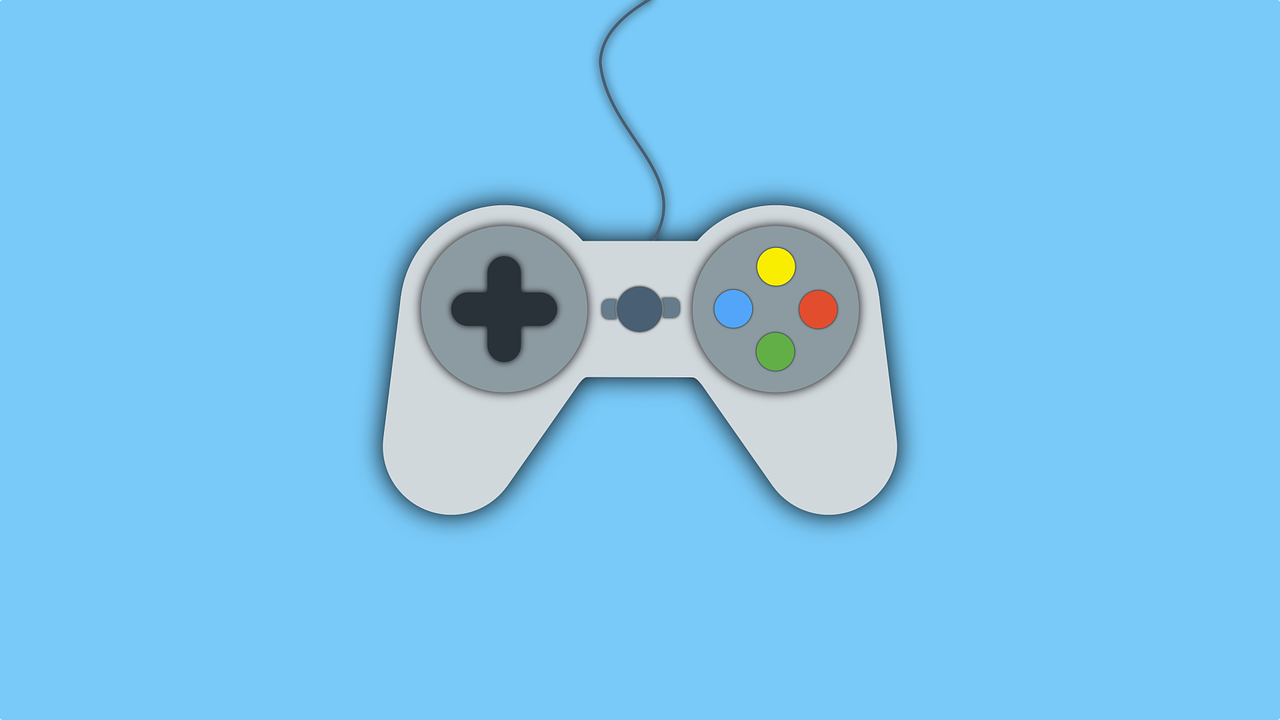
Comfort as a Priority
Comfort is a fundamental aspect of ergonomics in game controller design. A comfortable controller allows players to engage in long gaming sessions without experiencing fatigue or discomfort. The key elements contributing to comfort in controller design include:
Comfort is a fundamental aspect of ergonomics in game controller design, and it plays a pivotal role in ensuring that gamers can immerse themselves in extended gaming sessions without the distraction of fatigue or discomfort. A well-designed controller not only enhances the gameplay experience but also contributes to the overall well-being of the player. The key elements contributing to comfort in controller design are as follows:
Ergonomic Shape: The overall shape of the controller is paramount. An ergonomic design takes into account the natural contours of the human hand, ensuring that the controller fits comfortably in various hand sizes and allows for a relaxed grip. The curvature and placement of buttons, triggers, and thumbsticks should align with the natural range of motion of the fingers and thumbs, reducing strain during prolonged use.
Weight Distribution: Proper weight distribution is crucial for a balanced feel in the hands. A well-balanced controller minimizes hand and wrist fatigue, enabling players to maintain control and precision over extended periods. Weight should be evenly distributed to prevent one side of the controller from feeling heavier than the other.
Material and Texture: The choice of materials and textures used in the controller’s construction greatly impacts comfort. High-quality, non-slip materials that feel pleasant to touch can enhance the overall gaming experience. Controllers should be designed to minimize sweat and discomfort during long sessions.
Button Placement: The placement and size of buttons and triggers should be intuitive and accessible. Players should not have to strain or stretch their fingers to reach critical controls. Well-designed button placement allows for quick and effortless responses during gameplay.
Customizability: Customization options, such as interchangeable thumbsticks, D-pads, or button layouts, empower players to adapt the controller to their preferences. This flexibility ensures that gamers can fine-tune the controller to suit their unique needs and play styles.
Grip Design: The grip design should provide ample support to the palm and fingers. Controllers may incorporate textured grips or contours that provide a secure hold and prevent slipping during intense gaming moments.
Handedness Considerations: Game controllers should cater to both left-handed and right-handed players. Ambidextrous or swappable components, such as thumbsticks and D-pads, accommodate players of all preferences.
Fatigue Reduction Features: Advanced controllers may incorporate features like adjustable trigger sensitivity or paddles on the underside of the controller. These features reduce the effort required to perform certain actions, minimizing finger and hand fatigue.
Vibration and Haptic Feedback: Refined haptic feedback systems can enhance comfort by providing tactile cues that complement gameplay. These sensations can be fine-tuned to be immersive without being overwhelming, adding to the overall comfort and enjoyment of the gaming experience.
Accessibility Features: Inclusive design is crucial in controller ergonomics. Features such as large buttons, easy-to-reach controls, and programmable functions accommodate gamers with varying abilities, ensuring that everyone can enjoy gaming comfortably.
In summary, creating a comfortable game controller involves a thoughtful combination of ergonomic principles, materials, and customization options. Designing with player comfort in mind is not only essential for enjoyable gaming but also contributes to the well-being of gamers, allowing them to fully engage in their favorite virtual worlds without physical discomfort or strain. Game controller manufacturers continue to refine their designs, striving to offer players the best possible comfort and control in every gaming session.
To delve further into this matter, we encourage you to check out the additional resources provided here: Ergonomics Principles for Gaming Controller Design

Grip and Form
Ergonomically designed controllers feature contours and shapes that conform to the player’s hands, ensuring a secure and comfortable grip. This prevents hand cramps and strain during extended gaming sessions.
Ergonomics in game controller design delves deep into the intricate relationship between form and function. Specifically, the contours and shapes of ergonomically designed controllers are more than aesthetic choices; they are a deliberate and player-centric approach to enhancing the gaming experience.
Tailored for Hands of All Sizes: Ergonomic controllers are crafted with an understanding that players come in various shapes and sizes. These controllers feature contours that adapt to the natural curvature of the human hand. The result is a controller that feels like an extension of the player’s own hand, regardless of whether they have petite hands or larger palms. This inclusive design ensures that gamers of all ages and physical profiles can enjoy gaming without discomfort or limitations.
Secure and Fatigue-Resistant Grip: The secure and comfortable grip afforded by ergonomically designed controllers is perhaps one of their most celebrated features. Gamers can hold these controllers for hours on end, engaging in marathon gaming sessions without experiencing the hand cramps, fatigue, or discomfort associated with less thoughtfully designed controllers. The shape and texture of the controller material work in harmony, offering a tactile experience that ensures the controller stays firmly in the player’s grasp.
Enhanced Control and Precision: Beyond comfort, ergonomic design contributes significantly to control and precision. The contours guide the fingers to the correct buttons and controls intuitively, reducing the need to fumble or adjust hand positions during gameplay. This enhanced control becomes particularly crucial in competitive gaming, where split-second decisions and precise actions can determine victory or defeat.
Reduced Risk of Repetitive Strain Injuries: Ergonomically designed controllers prioritize the long-term well-being of players. By minimizing awkward hand positions and excessive strain on the wrists and fingers, these controllers help reduce the risk of repetitive strain injuries (RSIs) often associated with prolonged gaming. Players can enjoy their favorite titles without worrying about the potential health consequences.
Player-Centric Innovation: The ongoing quest for ergonomic excellence in controller design involves extensive research, testing, and player feedback. Manufacturers continually refine their designs, taking into account player preferences and evolving gaming trends. This player-centric approach ensures that controllers remain at the forefront of comfort and performance, adapting to the changing needs and expectations of the gaming community.
A Holistic Gaming Experience: In essence, ergonomic controllers contribute to a more holistic gaming experience. They remove the physical barriers that might otherwise distract or hinder players, allowing them to immerse themselves fully in the virtual worlds they explore. The comfort and control provided by these controllers transform gaming from a mere pastime into an immersive adventure, where players can focus on strategy, skill, and the joy of play.
As gaming technology continues to advance and virtual realities become increasingly lifelike, the importance of ergonomic design in game controllers will only grow. It ensures that players remain at the center of the gaming experience, free to explore, compete, and connect without the limitations of discomfort or fatigue. Ergonomics is not just about controller design; it’s about crafting controllers that empower players to unlock their full gaming potential and enjoy every moment of their digital adventures.
For a comprehensive look at this subject, we invite you to read more on this dedicated page: Xbox Vs PS5 controller ergonomics, What’s your personal view ? : r …
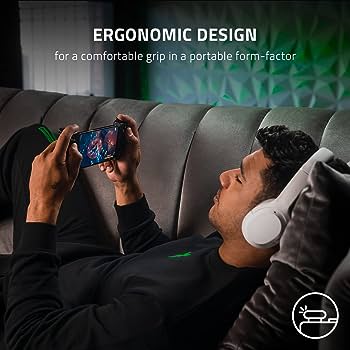
Weight Distribution
Proper weight distribution in a controller ensures that it feels balanced and does not create undue pressure on specific areas of the hands or wrists.
Proper weight distribution in a controller is a fundamental aspect of controller design that can significantly impact the comfort and ergonomics of gaming experiences. Achieving the right balance in weight distribution ensures that the controller feels well-suited to the player’s hands and minimizes the risk of discomfort or strain during prolonged gaming sessions.
When a controller is well-balanced, it means that its weight is evenly distributed across its structure. This equilibrium prevents any undue pressure on specific areas of the hands or wrists, which can lead to fatigue, discomfort, or even gaming-related injuries like repetitive strain injuries (RSI). In contrast, poorly balanced controllers can put excessive stress on certain hand muscles, tendons, or joints, leading to discomfort or pain over time.
Balanced weight distribution becomes especially critical as gaming sessions extend for hours, which is a common occurrence for dedicated gamers. It allows players to maintain a more relaxed and natural grip on the controller, reducing tension in the hands and wrists. This can enhance both gaming performance and overall well-being, as players can focus on gameplay rather than discomfort.
Manufacturers of gaming controllers often invest in extensive research and development to ensure that their products offer optimal weight distribution. They take into account factors such as the placement of internal components, the choice of materials, and the overall design of the controller. Innovations like adjustable weights or customizable grip components further empower gamers to fine-tune the weight distribution to their personal preferences.
Moreover, proper weight distribution doesn’t just affect comfort; it can also influence gameplay precision. Gamers often find it easier to make precise movements and execute complex maneuvers when the controller is well-balanced, as it provides better control and stability.
In summary, proper weight distribution in a gaming controller is not merely a matter of comfort; it’s a crucial factor that contributes to the overall gaming experience. It helps prevent discomfort and potential injuries, enhances gameplay precision, and allows players to enjoy extended gaming sessions without undue strain. As the gaming industry continues to evolve, manufacturers will likely continue to prioritize balanced weight distribution as a key element of controller design.
Explore this link for a more extensive examination of the topic: Razer Adjustable VR Head Strap System for Meta … – Amazon.com
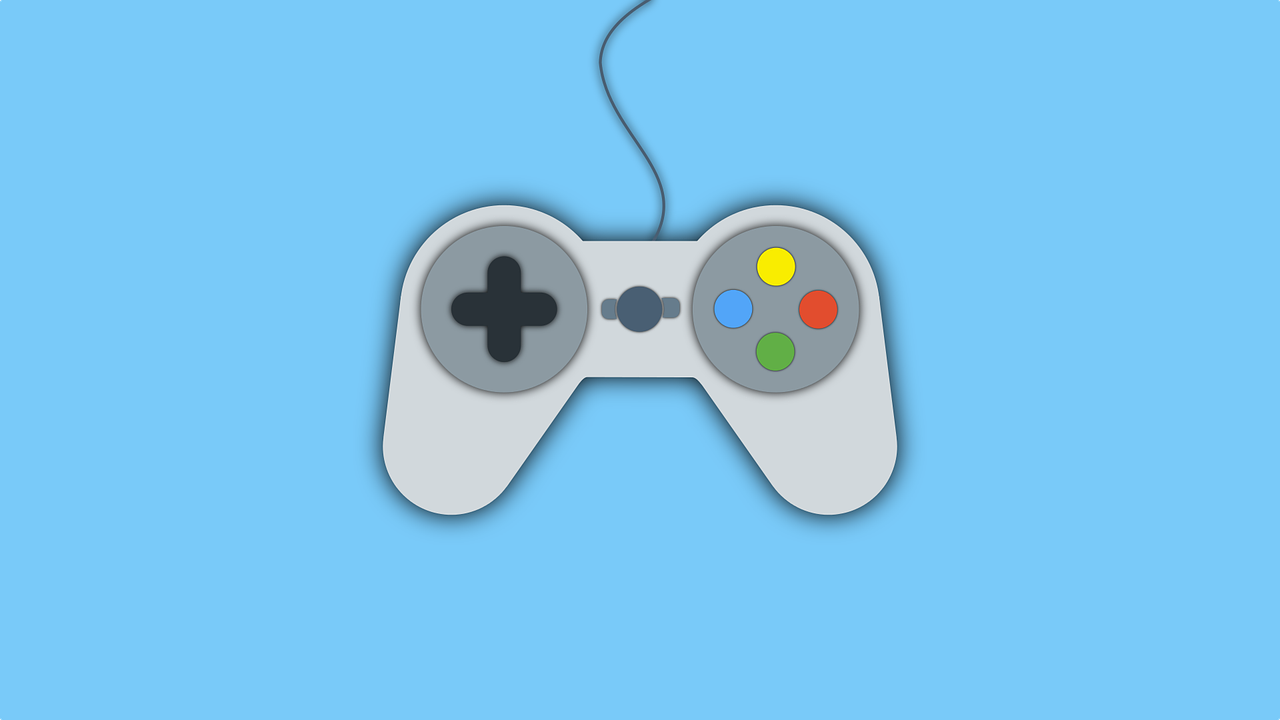
Button Placement
Ergonomically positioned buttons and triggers allow players to access controls without stretching or contorting their fingers, ensuring ease of use.
nullIf you’d like to dive deeper into this subject, there’s more to discover on this page: The best Xbox controllers for 2023: Microsoft, Scuf, PowerA, and …
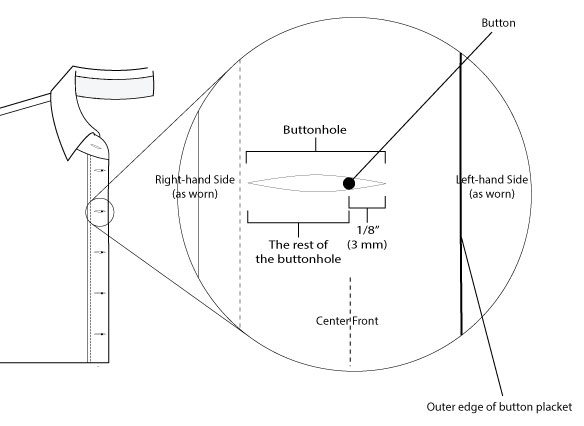
Texture and Materials
The choice of materials and textures on a controller’s surface impacts comfort. Soft, non-slip materials enhance grip and reduce discomfort.
The selection of materials and textures for a controller’s surface is a pivotal consideration in the design of gaming peripherals. It’s not just about aesthetics but also about optimizing comfort and performance for gamers during long gaming sessions. The choice of materials can profoundly influence the overall gaming experience in several ways:
1. Comfort and Ergonomics: Soft, non-slip materials are a gamer’s best friend. They create a comfortable and ergonomic interface between the player’s hands and the controller, reducing the risk of discomfort, chafing, or fatigue during extended gaming sessions. The tactile experience of holding a controller with these materials enhances the overall feel, ensuring players can focus on the game itself without being distracted by physical discomfort.
2. Enhanced Grip: A secure grip on the controller is crucial, especially during intense gaming moments when precision and control matter most. Non-slip materials effectively reduce the risk of accidental slips and fumbles, allowing players to maintain a firm hold on the controller, whether they’re executing complex combos in a fighting game or navigating treacherous terrain in an adventure title. This improved grip translates into better in-game performance.
3. Sweat and Moisture Resistance: Gamers often find themselves in the heat of battle, both figuratively and literally. The pressure and excitement of gaming can lead to sweaty palms, which may make traditional controllers slippery and uncomfortable to hold. Materials with moisture-wicking properties can counteract this issue by effectively managing perspiration, ensuring that the controller remains comfortable and grippable even during intense gaming sessions.
4. Durability and Longevity: The choice of materials also influences the controller’s durability and longevity. Soft, non-slip materials that are resistant to wear and tear can extend the lifespan of the controller. Gamers invest in their gaming peripherals, and they expect them to withstand the test of time, offering a consistent level of comfort and performance throughout their gaming journey.
5. Personalization and Branding: The surface materials and textures can serve as a canvas for personalization and branding. Manufacturers have the opportunity to create unique, recognizable designs that not only provide comfort but also contribute to the overall aesthetics of the controller. This personal touch can enhance the emotional connection gamers have with their gaming gear.
In summary, the selection of materials and textures for a controller’s surface is a crucial aspect of controller design, impacting comfort, grip, performance, and overall user satisfaction. Soft, non-slip materials are at the forefront of this design philosophy, ensuring that gamers can enjoy their favorite titles for hours on end without compromising on comfort or control. As technology advances and new materials become available, controller designers have the opportunity to continue refining these aspects, enhancing the gaming experience for players around the world.
If you’d like to dive deeper into this subject, there’s more to discover on this page: Senses of place: architectural design for the multisensory mind …

Adjustable Components
Some controllers offer adjustable components, such as thumbstick tension and trigger sensitivity, allowing players to fine-tune the controller to their preferences.
The world of gaming is all about immersion and personalization, and controllers have evolved to reflect this philosophy. Some controllers have taken customization to the next level by offering adjustable components that let players fine-tune their gaming experience to match their unique preferences and playstyles.
One of the most significant advancements in this regard is the ability to adjust thumbstick tension. These thumbsticks, which are crucial for controlling movement and aiming in many games, can now be tailored to provide the exact amount of resistance that feels comfortable to the player. Whether you prefer a stiff thumbstick for precise aiming or a looser one for swift maneuvers, the power to customize the tension ensures that the controller becomes an extension of your gaming instincts.
Trigger sensitivity is another key element that players can adjust. The triggers on modern controllers often have sensors that can be fine-tuned to respond to varying degrees of pressure. For gamers who favor precision shooting, this feature allows them to set the triggers to require a firm squeeze for firing, emulating the sensation of pulling a real trigger. On the other hand, players who want rapid-fire capabilities can adjust the triggers to be highly sensitive, enabling them to fire in quick succession with a gentle touch.
The ability to customize these controller components extends beyond personal preferences. It’s a game-changer for accessibility. Players with physical disabilities can adjust thumbstick tension and trigger sensitivity to match their abilities, ensuring that gaming remains an inclusive and enjoyable pastime for everyone.
Moreover, the impact of these adjustable components extends to competitive gaming. Professional esports players, for example, often have very specific preferences when it comes to controller sensitivity. Being able to fine-tune thumbstick tension and trigger sensitivity enables them to optimize their performance and gain a competitive edge in tournaments.
In conclusion, the inclusion of adjustable components in controllers is a significant step forward in the world of gaming. It offers players the freedom to tailor their gaming experience to their liking, whether for personal comfort, accessibility, or competitive advantage. It exemplifies the industry’s commitment to making gaming a more inclusive, customizable, and immersive experience for all players, regardless of their preferences or physical abilities. As technology continues to advance, we can expect even more innovative ways to customize and enhance the gaming experience through controller design.
For a comprehensive look at this subject, we invite you to read more on this dedicated page: X COMFORT AIR (Red & Black) – Thermaltake USA

Performance Enhancement
While comfort is crucial, ergonomics in controller design also seeks to enhance gaming performance. A well-designed controller enables players to execute actions quickly, accurately, and with minimal effort. Key elements that contribute to performance in controller design include:
While comfort is undoubtedly a cornerstone of controller design, the pursuit of ergonomic excellence also aligns with the overarching goal of elevating gaming performance. An expertly crafted controller goes beyond mere comfort; it becomes an extension of the player’s intent, enhancing their ability to excel in the gaming realm. Here are the key elements that synergize to optimize gaming performance in controller design:
Grip and Comfort: A comfortable grip is the foundation upon which gaming performance is built. A controller should seamlessly conform to the player’s hand, reducing fatigue during extended gaming sessions. Ergonomically contoured grips ensure that the controller feels like a natural extension of the hand, allowing for precise and effortless movements.
Button Placement and Accessibility: The placement of buttons and triggers is a delicate balance between convenience and functionality. A well-designed controller strategically positions buttons and triggers within easy reach of the player’s fingers, minimizing the time and effort required to execute actions. This ensures quick response times, crucial for competitive gaming.
Button Tactility and Responsiveness: The tactile feedback of buttons and triggers significantly impacts performance. Responsive and clicky buttons offer the assurance of input registration, enhancing precision during gameplay. A satisfying button press not only feels rewarding but also provides valuable feedback to the player.
Analog Sticks: Analog sticks are the fine-tuned instruments that govern character movement and camera control. Their design, size, and sensitivity are pivotal to gaming performance. A controller’s analog sticks should strike a balance between precision and ease of use, enabling gamers to navigate virtual worlds and aim with remarkable accuracy.
Trigger Sensitivity: Triggers are essential for actions such as shooting, accelerating, and braking. The sensitivity of triggers should be adjustable to cater to different gaming styles. Competitive gamers often prefer hair-trigger settings for rapid firing, while others may seek a more gradual pull for precise control.
Weight and Balance: The weight and balance of a controller contribute to overall stability during gameplay. A well-balanced controller minimizes hand strain and ensures that it remains comfortable to hold for extended periods. It also enhances control and accuracy in fast-paced games.
Customization Options: Personalization is key to optimizing gaming performance. Controllers with customizable buttons, trigger stops, and sensitivity settings empower players to tailor the controller to their unique preferences and playstyles. This adaptability can give players a competitive edge.
Durability: A controller’s durability directly affects its longevity and continued performance. Gamers rely on controllers to withstand rigorous use, including intense button mashing and rapid joystick movements. Robust materials and build quality ensure that the controller remains reliable over time.
Wireless Connectivity: Wireless controllers provide freedom of movement, a crucial aspect of gaming performance. Low-latency wireless technology ensures that actions are transmitted to the console or PC with minimal delay, preserving the competitive edge for online gaming.
Haptic Feedback: Advanced haptic feedback technologies, such as rumble and adaptive triggers, can enhance gaming performance by providing immersive feedback. Players can feel in-game events, enabling quicker reactions and a deeper connection to the virtual world.
In summary, ergonomics in controller design transcends mere comfort; it’s a science and art dedicated to elevating gaming performance. By meticulously optimizing grip, button placement, tactile feedback, and customization options, controllers become invaluable tools that empower players to execute actions swiftly, accurately, and effortlessly. A well-designed controller is not just a conduit for gaming; it’s an instrument that amplifies the player’s skill, ultimately enhancing their gaming performance and enjoyment.
For additional details, consider exploring the related content available here Logitech G502 HERO High Performance Wired … – Amazon.com

Responsive Buttons
Buttons with minimal travel distance and precise feedback ensure that player inputs translate into in-game actions instantly.
nullDon’t stop here; you can continue your exploration by following this link for more details: Sony DualSense Edge review: a pro controller done (mostly) right …

Analog Sticks
Well-calibrated analog sticks offer precise control over character movement, camera angles, and aiming in games.
Well-calibrated analog sticks offer precise control over character movement, camera angles, and aiming in games, serving as the linchpin of an immersive gaming experience. These unassuming thumbsticks may appear straightforward, but their impact on gameplay is profound.
When it comes to character movement, analog sticks enable players to navigate virtual worlds with finesse. The subtle tilts and nudges translate into fluid strides or cautious tiptoeing, allowing players to express their intentions with a nuanced touch. This level of control becomes especially crucial in genres like platformers or stealth games, where every step matters.
Camera control, too, hinges on the precision of analog sticks. In open-world adventures or third-person shooters, players can effortlessly sweep the camera to capture breathtaking vistas or snap it sharply to lock onto a foe. The intuitive, 360-degree range of motion ensures that players are always in command of their viewpoint, enhancing not only gameplay but also the overall immersion in the game’s universe.
Perhaps the most critical application is aiming in games, especially in first-person shooters. Analog sticks enable players to track targets smoothly and adjust their crosshairs with finesse. This delicate balance of speed and accuracy is what separates a sharpshooter from a novice, making the difference between a critical headshot and a near miss. The tactile feedback and responsive nature of well-calibrated analog sticks create an almost symbiotic relationship between player and game, where skill and strategy shine.
In conclusion, well-calibrated analog sticks are the unsung heroes of gaming, facilitating precise control that underpins a player’s every action. Whether it’s navigating treacherous terrain, framing the perfect shot, or tracking a moving target, these unassuming components are essential for an enjoyable and immersive gaming experience. They are a testament to the meticulous design and engineering that goes into crafting the perfect gaming controller.
For a comprehensive look at this subject, we invite you to read more on this dedicated page: The best Xbox controllers for 2023: Microsoft, Scuf, PowerA, and …

Trigger Design
Triggers with optimal resistance and a comfortable pull range enable players to execute actions like shooting or accelerating with precision.
Triggers designed with optimal resistance and a comfortable pull range represent a pivotal aspect of gaming controllers, and their significance extends far beyond mere comfort. These triggers have the potential to elevate the gaming experience in several profound ways:
Precision in Gameplay: The resistance and pull range of triggers directly influence the precision with which in-game actions are executed. For example, in a first-person shooter, a well-calibrated trigger allows players to control the intensity of their shots. A slight pull may result in a single, accurate shot, while a deeper pull can unleash a rapid burst. This level of precision can be the difference between a hit or a miss, a victory or a defeat.
Immersive Realism: In immersive gaming experiences, such as driving simulations, the resistance of triggers can mimic the sensation of pressing a physical pedal or pulling a trigger on a real firearm. This realism enhances immersion, making players feel as if they are truly interacting with the game’s environment. It adds depth to the gameplay and heightens the emotional connection to in-game actions.
Reduced Fatigue: Comfortable trigger resistance ensures that extended gaming sessions remain enjoyable and fatigue-free. Players can engage in long, intense battles or races without experiencing strain or discomfort in their fingers. This comfort factor is especially crucial for professional gamers and competitive players who require peak performance for extended periods.
Customization Possibilities: Gaming controllers are increasingly offering customization options for trigger sensitivity and resistance. Players can tailor these settings to match their preferences and playing styles. Whether you prefer a hair-trigger response for rapid fire or a more substantial resistance for deliberate shots, customizable triggers put you in control of your gaming experience.
Accessibility: Well-designed triggers with optimal resistance can improve accessibility for gamers with diverse needs. Players with disabilities may benefit from triggers that require minimal force to activate, ensuring that gaming remains an inclusive and enjoyable pastime for everyone.
Tactical Advantage: In multiplayer and competitive gaming, having triggers that respond precisely to your input can provide a tactical advantage. It enables quick reflexes and faster response times, potentially giving you the upper hand in intense gaming scenarios.
Future-Proofing: As game development continues to advance, trigger design remains a critical consideration. Well-engineered triggers with adjustable resistance are future-proofing gaming controllers, ensuring they can adapt to the evolving demands of next-generation games.
Game Genre Versatility: Different game genres demand varying degrees of trigger sensitivity and resistance. Racing games, for instance, benefit from triggers that provide a nuanced accelerator and brake feel, while action games may require quick, responsive triggers for combat sequences. Versatile triggers accommodate the diverse gaming experiences players seek.
In essence, triggers with optimal resistance and a comfortable pull range are not mere components of gaming controllers; they are catalysts for enhanced gameplay, immersive realism, and player empowerment. Their role in delivering precision, comfort, and customization options underscores their pivotal importance in shaping the gaming experience. As technology continues to advance, we can expect these triggers to evolve further, enriching gaming in ways we have yet to imagine.
If you’d like to dive deeper into this subject, there’s more to discover on this page: Xbox Vs PS5 controller ergonomics, What’s your personal view ? : r …

Button Layout
An intuitive and logically organized button layout allows players to access essential controls without hesitation, minimizing cognitive load during gameplay.
An intuitive and logically organized button layout is the cornerstone of an exceptional gaming experience. This thoughtful arrangement empowers players with quick and seamless access to essential controls, ensuring that their focus remains squarely on the game itself, not on deciphering complex button combinations. By minimizing cognitive load during gameplay, an ergonomic button layout becomes an unsung hero, enhancing immersion, boosting performance, and allowing players to immerse themselves fully in the virtual worlds they explore.
Imagine a controller where the placement of buttons and triggers aligns perfectly with the natural movements and instincts of the player. In such a setup, actions like jumping, shooting, and performing complex maneuvers become second nature, requiring little conscious effort. Gamers can react swiftly to in-game challenges, executing their strategies flawlessly.
Additionally, a well-organized button layout contributes to the accessibility and inclusivity of gaming. It ensures that players of all skill levels and physical abilities can comfortably engage with the game. Whether you’re a novice exploring your first virtual world or a seasoned pro competing at the highest level, an ergonomic button layout levels the playing field, making gaming enjoyable and accessible to everyone.
As game developers continue to prioritize user-friendly interfaces and controllers, the future holds the promise of even more intuitive and customizable button layouts. These layouts will adapt to individual preferences, offering players the flexibility to optimize their control schemes. With every button placed thoughtfully and logically, gaming experiences will only become more immersive, responsive, and enjoyable for players worldwide.
Explore this link for a more extensive examination of the topic: Sony DualSense Edge review: a pro controller done (mostly) right …
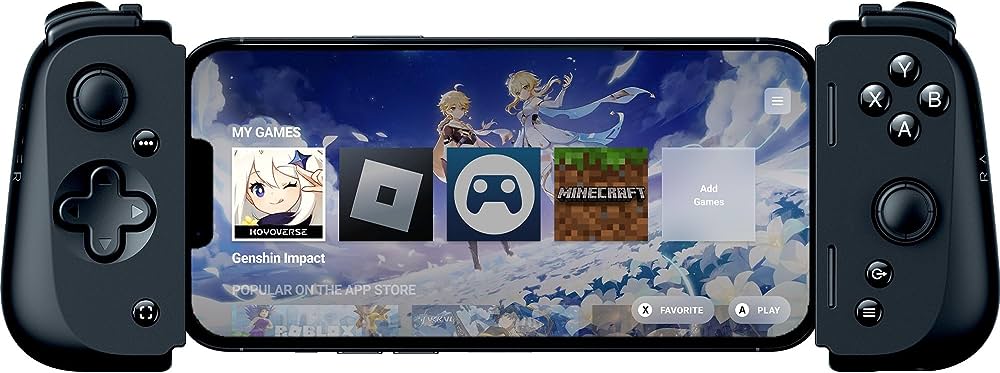
Balancing Act: The Ideal Ergonomic Controller
Achieving the perfect balance between comfort and performance in a game controller is a complex task that demands meticulous design and extensive user testing. Game controller manufacturers invest substantial resources in research and development to create controllers that cater to a broad range of player preferences.
From the symmetrical layout of a PlayStation controller to the asymmetric design of an Xbox controller, each offers a unique ergonomic experience. Player comfort, hand size, and personal preference play pivotal roles in determining which controller design resonates most with an individual.
nullTo delve further into this matter, we encourage you to check out the additional resources provided here: VR Controllers: A Comprehensive Review – SynergyXR
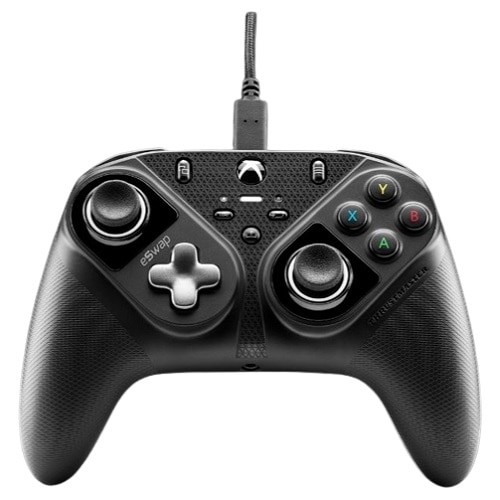
The Future of Ergonomics in Gaming
As gaming technology evolves, so too does the science of ergonomics. Emerging technologies like haptic feedback, adaptive triggers, and even biometric sensors are being integrated into controllers to further enhance the gaming experience. These advancements are designed not only to provide comfort and performance but also to immerse players in more lifelike and engaging gaming environments.
As gaming technology evolves, so too does the science of ergonomics. Emerging technologies like haptic feedback, adaptive triggers, and even biometric sensors are being integrated into controllers to further enhance the gaming experience. These advancements are designed not only to provide comfort and performance but also to immerse players in more lifelike and engaging gaming environments.
Haptic feedback, for instance, adds a new dimension to gameplay by allowing you to feel the impact of in-game events, whether it’s the recoil of a powerful weapon or the rumble of a racing car’s engine. This tactile sensation deepens your connection with the virtual world, making every gaming moment more visceral.
Adaptive triggers introduce a level of responsiveness that adapts to in-game scenarios. Imagine the tension in a bowstring as you draw it for a precise shot or the resistance of a vehicle’s brakes as you navigate treacherous terrain. These triggers provide an incredibly immersive experience by simulating the physical feedback your character would feel in the game.
Moreover, biometric sensors are entering the scene, monitoring your heart rate, perspiration levels, and even eye movements. This data can be used to dynamically adjust the game’s difficulty, pacing, or intensity in real-time, ensuring that you’re always challenged but never overwhelmed. It’s a remarkable step toward personalized gaming experiences tailored to your physiological responses.
The synergy between these ergonomic innovations and the gaming environment creates a harmonious blend of technology and human interaction. As the lines between the virtual and real worlds blur, gamers can expect not just improved performance and comfort but also a deeper emotional connection with the games they play.
In essence, the evolving science of ergonomics in gaming controllers is taking us closer to the ultimate goal of gaming: complete immersion in worlds limited only by our imagination. These technologies are not just enhancing gameplay; they are transforming it into an unforgettable journey where every sensation is felt, every challenge is personalized, and every victory is truly earned.
To expand your knowledge on this subject, make sure to read on at this location: Sony DualSense Edge review: a pro controller done (mostly) right …
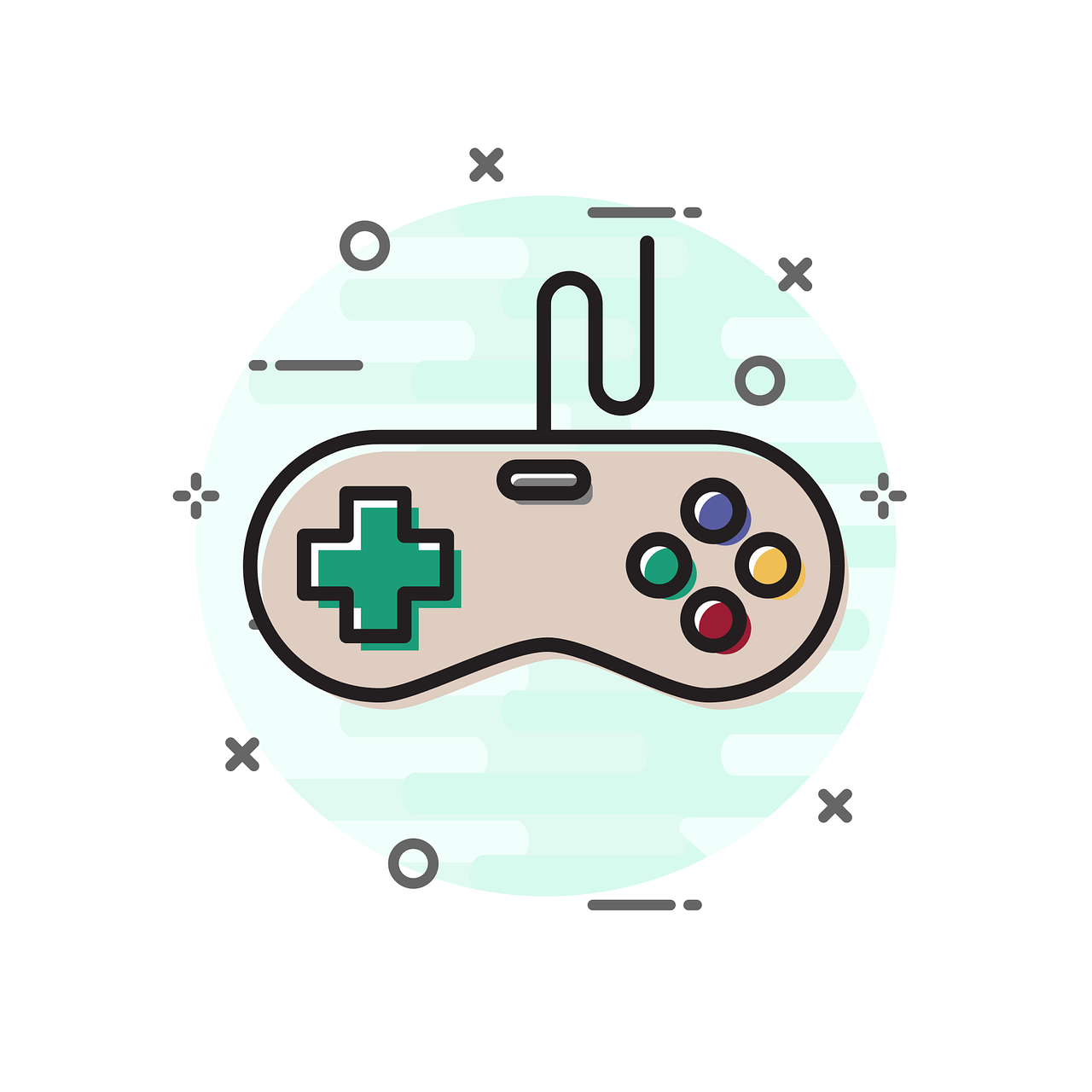
In conclusion, ergonomics in game controller design represents the marriage of science and art, seeking to strike the perfect balance between player comfort and performance. The ongoing pursuit of ergonomic excellence ensures that gamers can enjoy their favorite titles for hours on end, seamlessly translating their skills and strategies into digital triumphs. As gaming continues to captivate audiences worldwide, the importance of ergonomics in controller design remains an essential factor in creating unforgettable gaming experiences.
Ergonomics in game controller design is a testament to the intricate synergy of science and artistry. It’s an ongoing quest to harmonize player comfort and peak performance, weaving together the threads of human anatomy, technology, and aesthetics. This relentless pursuit of ergonomic excellence has far-reaching implications for gamers and the gaming industry as a whole.
Optimizing Performance: Ergonomics isn’t just about comfort; it’s about enhancing gameplay performance. A well-designed controller ensures that every button press, trigger pull, or joystick movement translates seamlessly into in-game actions. Gamers can execute complex maneuvers, precise aiming, and lightning-fast reactions with ease, giving them a competitive edge.
Endurance and Enjoyment: Long gaming sessions are common, and a comfortable controller becomes a true companion during these marathons. Ergonomically designed controllers reduce the risk of fatigue, allowing gamers to stay immersed in their virtual worlds without discomfort. The result? Hours of uninterrupted enjoyment.
Inclusivity: Ergonomics goes beyond individual preferences; it caters to diverse player demographics. Controllers designed with inclusivity in mind accommodate a wide range of hand sizes and physical abilities. This ensures that gaming remains accessible to players of all ages and backgrounds.
Seamless Immersion: An ergonomic controller is like an extension of the player’s body. It disappears into the background, allowing gamers to become fully absorbed in the game’s narrative and challenges. Immersion is key to creating unforgettable gaming experiences.
Aesthetic Appeal: Ergonomic controllers aren’t just functional; they’re often aesthetically pleasing. Their form factors, curves, and finishes are carefully crafted to delight the eye. A visually appealing controller adds to the overall enjoyment of gaming.
Evolution and Innovation: The gaming industry never stands still, and neither does controller design. As technology advances, controllers evolve to incorporate new features like touchpads, adaptive triggers, and haptic feedback—all while maintaining ergonomic principles. This constant innovation keeps gaming fresh and exciting.
Competitive Advantage: In the world of esports and competitive gaming, every advantage matters. Ergonomic controllers give professional players the confidence to perform at their peak, knowing that their equipment won’t hold them back. It’s a subtle yet critical component of their success.
User-Centric Design: Ergonomics is inherently user-centric. It involves listening to gamers’ feedback, understanding their needs, and iterating on controller designs. This collaborative process ensures that controllers are continually refined to meet the demands of the gaming community.
In conclusion, the marriage of science and art in ergonomics is a driving force in the gaming world. It’s a commitment to creating controllers that are not just tools but gateways to unforgettable adventures. As gaming continues to captivate audiences worldwide, the importance of ergonomics in controller design remains a foundational pillar, promising that players can immerse themselves in their favorite titles, translate their strategies into digital triumphs, and forge lasting memories in the ever-evolving landscape of gaming.
Looking for more insights? You’ll find them right here in our extended coverage: Senses of place: architectural design for the multisensory mind …
More links
To expand your knowledge on this subject, make sure to read on at this location: Ergonomics Principles for Gaming Controller Design
